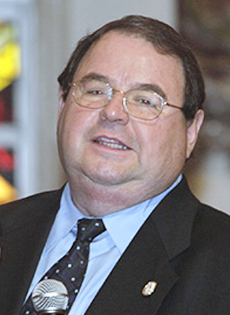
History of the eucharistic celebration XII: The Council of Trent
Monday, September 28, 2020
*Rogelio Zelada
"I was your pest while I lived, but when I die, I will be your death, Pope." Historians say that, when Martin Luther's body was lifted, this inscription appeared on the wall, which the former Augustinian monk had scribbled with his nails and with his last strength. What at first Pope Leo X had deemed a theological dispute — "a dispute among friars" — had become another church, with its own worship, dogmas, clergy, faithful and the possibility that great lords could take possession of the goods, monasteries and properties of the Church.
Emperor Charles V, a staunch Catholic, called a meeting of the leaders of the newly reformed churches because he had no choice but to accept the heresy. He urgently needed Germany to give him its support against the Turks and to come to his aid in the war he was waging against Francis I, King of France. It was a meeting where Protestants came to explain their reasons and where Martin Luther, who inspired the split, did not attend. Melanchton, his best disciple, arrived in his place and assured the papal representative that "in doctrine, we are in agreement with the Roman Church." Those 28 articles, however, "the Augsburg Confession," established the principles of the Protestant Reformation, which threw out the sacraments, priesthood, consecrated life, religious vows, the value and importance of good works, intercession, and devotion to saints, among others.
In barely 13 years, the Protestant movement had developed its own doctrinal body and become an important political force that would set Sweden on fire and soon Denmark. After Luther's death, Alexander Farnesse — Pope Paul III — rose to the Petrine See with the strength and desire to heal the Church of Christ. The Dutchman Adrian VI, tutor of Charles V, had already tried, but his short pontificate did not allow it. Paul III gradually gathers all the men he finds fit to promote a movement for the necessary renewal of the Church. In the midst of enormous difficulties, oppositions and obstacles, Paul III convokes the great council that will carry out the reform of the Catholic Church: the Council of Trent. This council had a long way to go until it promulgated its decrees on Dec. 4, 1563, and several pontiffs left their mark: Paul III (1544-1549), Julius III (1551-1552) and Pius IV (1561-1563).
The conciliar decrees were the fruit of a profound and mature theological reflection, in which what the Reformation had questioned was made clear, such as the interpretation and inspiration of the Holy Scriptures, the value of justification and tradition, the ecclesial hierarchy, good works, and the sacraments.
On that December 4, the 226 Council fathers sang a splendid "Te Deum" and sent to Pope Pius IV the decrees they had just agreed upon in order to obtain the definitive approval of the Roman Pontiff, who subjected all the decrees to a meticulous scrutiny by his theologians.
The Tridentine liturgical renewal served to solemnly define the sacrificial value of the celebration of the Eucharist: the Mass is both a banquet and a sacrifice. It revalued the "two tables," that of the Word and that of the Eucharist. It asked the clergy to offer a clear catechesis of the liturgical rites, so that the faithful would be enlightened in their understanding of the language and symbols (although, unfortunately, this catechesis remained a dead letter.)
The council made a serious revision of the Roman Missal (which was published by St. Pius V) with the novelty that the typical Mass took the format of the private Mass. It was celebrated silently by the priest, helped by an altar boy with the assistance of the faithful, who had to follow the rites in silence, without listening, without seeing, and finally, without understanding.
The conciliar renewal chose the path of spirituality of the priest, so necessary for healing the clerical state, which consequently should serve to strengthen the spirituality and the ecclesial participation of the laity. The meas solemne format of the liturgical celebration was left for the great and exceptional pontifical moments, when the Eucharist was celebrated or presided over by the bishop (or the priest) assisted by ministers (deacons, sub-deacons, acolytes, schola cantorum and the people).
The pope allowed the use of the chalice for the Communion of the faithful, but like the recommendation to receive Communion at each Mass, it was not implemented and later this faculty was revoked.
Pope Leo XIII recommended, as an act of devotion by the faithful, that they pray the rosary during the celebration of the Eucharist, and the worship of the Eucharist outside of Mass developed in a very important way. It acquired greater splendor and acceptance by the faithful: the blessing with the Blessed Sacrament appeared more brilliant and solemn than the Mass of the day. Perpetual adoration, the 40 hours and the Eucharistic congresses were much more appreciated and valued by the people than the celebration of Holy Mass.


Comments from readers